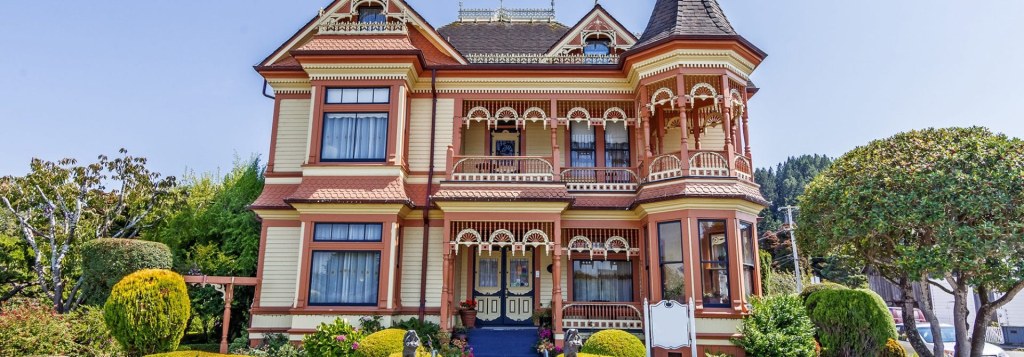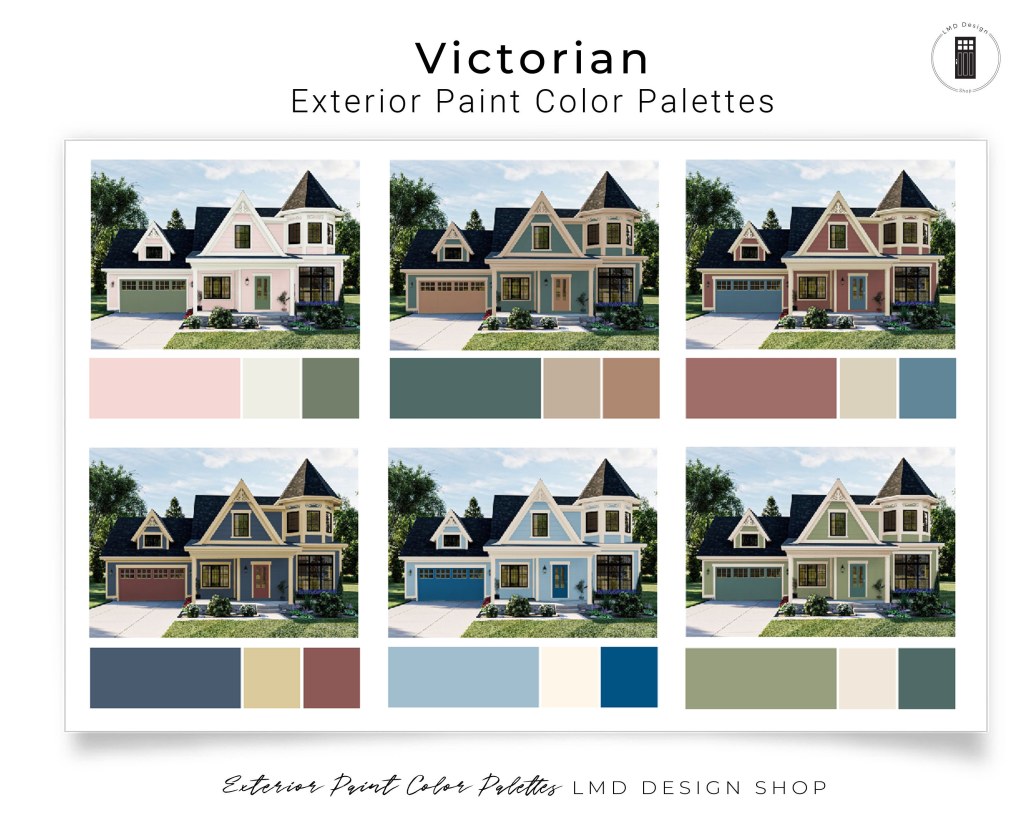Transform Your Home With Exquisite Victorian House Paint: Unleash The Charm And Enhance Your Space Today!
Victorian House Paint: Preserving the Grandeur of the Past
Introduction
Welcome, Home Lovers, to a journey through time as we delve into the world of Victorian house paint. In this article, we will explore the captivating history, timeless beauty, and practical considerations of painting Victorian houses. Whether you are a homeowner, an architecture enthusiast, or a history buff, this article will provide valuable insights into the art of preserving the grandeur of the past.
2 Picture Gallery: Transform Your Home With Exquisite Victorian House Paint: Unleash The Charm And Enhance Your Space Today!


Victorian houses, known for their ornate details and intricate craftsmanship, have become iconic representations of an era long gone. The key to maintaining the authenticity and charm of these architectural gems lies in choosing the right paint colors and techniques. Join us as we unlock the secrets of Victorian house paint and discover how it can breathe new life into these timeless structures.
Now, let’s embark on this enlightening journey and discover the enchanting world of Victorian house paint.
A Glimpse into the Past: What is Victorian House Paint?

Image Source: paintdenver.com
The term Victorian house paint refers to the specific color palettes and paint techniques used during the Victorian era, which spanned from the mid-19th century to the early 20th century. This style of painting is characterized by a rich and varied color scheme, often incorporating several hues on different architectural elements.
During the Victorian era, the exterior paint colors of a house were not chosen randomly. Instead, they were carefully selected to highlight the architectural details and express the social status of the homeowners. The paint colors used on Victorian houses were vibrant and bold, reflecting the prosperity and optimism of the time.
While the interior paint colors of Victorian homes were generally more subdued, they still showcased the era’s love for decorative elements. Elaborate stenciling, faux finishes, and intricate wallpapers were commonly used to create a sense of opulence and elegance within the walls of these grand houses.
The Artists Behind the Brush: Who Painted Victorian Houses?

Image Source: etsystatic.com
Victorian house paint was not merely a task left to the homeowner or a general painter. Instead, it was an art form that required the expertise of skilled craftsmen. Painters during the Victorian era were true artists, meticulously executing the intricate designs and color schemes that adorned these architectural masterpieces.
These skilled craftsmen were often influenced by the prevailing architectural styles of the time, such as Gothic Revival, Italianate, and Queen Anne. They worked closely with architects and homeowners to bring their visions to life, ensuring that every brushstroke captured the essence of the era while accentuating the unique features of each house.
Today, the legacy of these talented painters lives on through the restoration and preservation of Victorian houses. Their attention to detail and commitment to craftsmanship continue to inspire contemporary painters and homeowners who seek to honor the architectural heritage of the past.
Preserving History: When to Repaint a Victorian House
One of the key considerations when it comes to Victorian house paint is knowing when to repaint. Unlike modern houses, Victorian houses require regular maintenance to preserve their historic charm. Repainting a Victorian house is not solely a matter of aesthetics; it is a crucial step in ensuring the long-term structural integrity of the building.
Signs that it may be time to repaint a Victorian house include peeling or cracking paint, fading colors, and general wear and tear. Additionally, if the current paint job does not align with the original color scheme or if the paint layers are concealing intricate details, it may be necessary to embark on a restoration project.
When repainting a Victorian house, it is essential to consult with experts who specialize in historic preservation. They will have the knowledge and experience to identify the original paint colors and techniques used, ensuring that the restoration is as faithful to the original as possible.
Unveiling the Locations: Where to Find Victorian Houses
Victorian houses can be found in various locations around the world, each with its unique charm and architectural style. While they are most commonly associated with the United Kingdom and the United States, Victorian-inspired houses can also be found in countries such as Australia, Canada, and New Zealand.
In the United Kingdom, cities like London, Bath, and Edinburgh boast a wide array of stunning Victorian houses. These homes often feature elaborate facades, ornate balconies, and grand entrances, showcasing the opulence and sophistication of the Victorian era.
In the United States, San Francisco’s Painted Ladies are perhaps the most famous examples of Victorian houses. These colorful row houses, with their distinct architectural details and picturesque settings, have become an iconic symbol of the city.
Whether you are traveling or simply admiring from afar, exploring the neighborhoods where Victorian houses thrive is an experience that will transport you back in time.
The Magic Behind the Colors: Why Victorian House Paint Matters
Victorian house paint is not merely a decorative element; it plays a crucial role in preserving the historic significance and architectural integrity of these houses. The right paint colors can accentuate the intricate details of Victorian homes, making them stand out and capturing the admiration of passersby.
Choosing the appropriate paint colors for a Victorian house is a delicate balance between historical accuracy and personal preference. By selecting colors that complement the architectural style and period of the house, homeowners can ensure that their property remains a testament to the past while reflecting their own unique style.
Furthermore, Victorian house paint helps protect the exterior surfaces from weathering and deterioration. Modern paint products offer enhanced durability and protection against the elements, ensuring that these architectural treasures can withstand the test of time.
The Art of Victorian House Paint: How to Achieve Authenticity
Recreating the beauty and authenticity of Victorian house paint requires attention to detail and a deep understanding of the era’s artistic techniques. Here are some key steps to consider when embarking on your own Victorian house painting project:
Research the history and architectural style of your Victorian house to determine the appropriate color palette and paint techniques.
Remove any existing layers of paint to reveal the original surface and restore the intricate details.
Choose high-quality paint products that are specifically formulated for historic preservation and provide long-lasting protection.
Consider hiring a professional painter with experience in restoring Victorian houses to ensure the highest level of craftsmanship.
Pay attention to the fine details, such as decorative stenciling, faux finishes, and accent colors, to truly capture the essence of Victorian house paint.
Advantages and Disadvantages of Victorian House Paint
Advantages:
Preservation of History: Victorian house paint helps preserve the historic significance and architectural integrity of these iconic buildings.
Enhanced Aesthetics: The vibrant and intricate paint colors of Victorian houses add a touch of grandeur, making them stand out in any neighborhood.
Increased Property Value: A well-preserved and authentically painted Victorian house can attract potential buyers and increase property value.
Protected Surfaces: Modern paint products offer enhanced durability and protection against weathering, ensuring the longevity of Victorian houses.
Personal Expression: Victorian house paint allows homeowners to showcase their unique style while honoring the architectural heritage of the past.
Disadvantages:
Cost: Restoring and repainting Victorian houses can be a costly endeavor, especially when hiring professionals and using high-quality paint products.
Maintenance: Victorian houses require regular maintenance to prevent paint deterioration and ensure long-term structural integrity.
Historical Accuracy: Achieving historical accuracy in Victorian house paint requires extensive research and expertise, which may be challenging for some homeowners.
Time-Intensive: Restoring and repainting a Victorian house is a labor-intensive process that requires careful attention to detail and patience.
Regulatory Considerations: In certain areas with historic preservation regulations, obtaining approval for exterior paint colors and techniques may be a complex and time-consuming process.
Frequently Asked Questions (FAQ)
1. Can I use modern paint colors on a Victorian house?
While modern paint colors can be used on a Victorian house, it is important to consider the historical significance and architectural style of the building. Opting for colors that complement the era and bring out the unique features of the house is recommended.
2. Do I need to hire a professional to paint my Victorian house?
While it is possible to paint a Victorian house yourself, hiring a professional with experience in restoring historic properties is highly recommended. They possess the expertise and knowledge to preserve the authenticity of the house and ensure a high-quality paint job.
3. How often should I repaint my Victorian house?
The frequency of repainting a Victorian house depends on various factors such as climate, exposure to sunlight, and the quality of the previous paint job. Generally, it is recommended to repaint every 5-10 years or when signs of wear and tear become noticeable.
4. Can I use wallpaper instead of painting the interior of my Victorian house?
Yes, using wallpaper is a common practice in Victorian house interiors. However, it is important to choose wallpaper designs that align with the era and complement the architectural style of the house. Consult with experts in historic preservation for guidance on selecting appropriate wallpapers.
5. How can I protect the exterior paint of my Victorian house?
To protect the exterior paint of a Victorian house, regular maintenance is essential. This includes inspecting for signs of peeling or cracking, cleaning the surfaces, and addressing any issues promptly. Applying a protective topcoat or sealant can also help extend the lifespan of the paint.
Conclusion: Embrace the Timeless Beauty
As we conclude our exploration of Victorian house paint, we invite you to embrace the timeless beauty and historic significance of these architectural marvels. Whether you own a Victorian house, plan to restore one, or simply appreciate the artistry of the past, the preservation of these grand houses is a testament to our shared history.
By understanding the history, techniques, and considerations of Victorian house paint, we can ensure that these architectural treasures continue to inspire and captivate for generations to come. Let us honor the craftsmanship of the past and preserve the grandeur of Victorian houses for future Home Lovers to admire and cherish.
Final Remarks
This article serves as a comprehensive guide to Victorian house paint, offering valuable insights and practical advice for homeowners, history enthusiasts, and architecture lovers alike. The information provided here aims to inspire and educate, empowering readers to make informed decisions when it comes to preserving the beauty and authenticity of Victorian houses.
Please note that while the recommendations and techniques outlined in this article are based on extensive research and expert knowledge, individual circumstances may vary. It is always advisable to consult with professionals in historic preservation and painting to ensure the best results for your specific Victorian house.
This post topic: Paint



